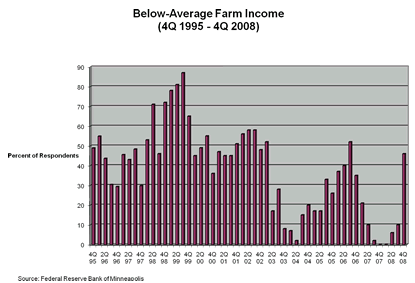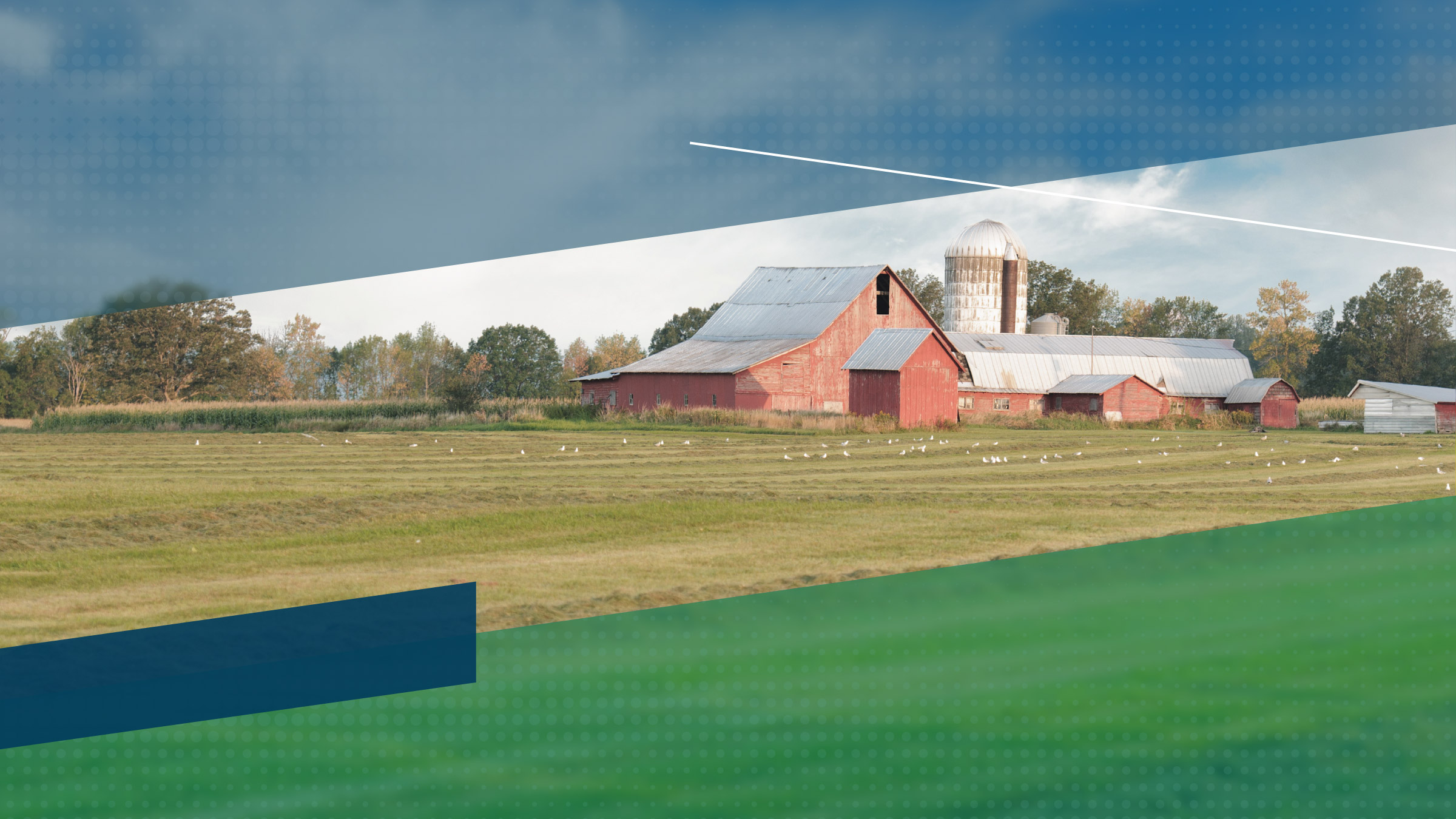“Input costs have risen dramatically, and with the recent fall of commodity prices, cash flow will be difficult,” said a Minnesota respondent to the Minneapolis Fed’s fourth-quarter 2008 (January) agricultural credit conditions survey. The results indicate that farm income decreased in the fourth quarter, but capital expenditures and household spending remained flat. Loan demand decreased, and collateral requirements increased. Not many loans were refused due to a shortage of funds, and interest rates decreased from the third quarter. Cash rents and land values dropped slightly from the third quarter. The outlook for the first quarter of 2009 is negative, as income, capital expenditures and household spending are all expected to decrease.
Farm income, household spending and capital investment
“Lower commodity prices are starting to hurt our customers,” said a North Dakota lender. Farm income appears to have deteriorated in the fourth quarter, as 46 percent of respondents reported lower than normal income for the fourth quarter. This is a big shift from the 66 percent of lenders who reported above normal income in the third quarter. Respondents from Minnesota were the most optimistic about profits, with 48 percent reporting higher farm profits in the fourth quarter. However, all other states reported decreases greater than increases in farm income. A Wisconsin lender noted that the falling price of milk has hurt dairy producers.
Lower profits are causing a shift in household consumption and capital equipment spending. Household spending flattened out—about the same percentage reported increases as decreases. Capital spending decreased slightly, as 35 percent reported decreases and 30 percent reported increases. “Some large purchases are being canceled now,” a Wisconsin lender said.

Loan repayments and renewals
Loan repayment activity was mixed, and loan renewals stabilized. About a fifth of the respondents reported decreased levels of loan repayments, and 23 percent reported increased levels. Respondents from Minnesota reported the highest level of repayments, while respondents from Montana reported the biggest decreases. “Those farmers that have not marketed 2008 crop production have [had] or will have challenges with meeting debt service requirements if they have any material leverage,” a South Dakota lender said. Loan renewals or extensions stabilized, as 77 percent of respondents indicated no change in this activity.
Demand for loans, required collateral and interest rates
Demand for loans decreased slightly in the fourth quarter, as 26 percent of lenders indicated decreased loan demand while 18 percent reported increased loan demand. Loan conditions may be tightening somewhat, with 21 percent of lenders reporting increased collateral requirements during the fourth quarter—up from 16 percent in the third quarter survey. Only 5 percent of respondents said they had refused a loan due to a shortage of funds. Both fixed and variable interest rates decreased during the fourth quarter. Fixed rates dropped about 30 basis points for operating and machinery loans and about 20 basis points for real estate loans. Meanwhile, variable rate interest rates dropped between 30 and 50 basis points.
Cash rents and land values
Cash rents and land values dropped slightly from the third quarter. Cash rents decreased slightly in the fourth quarter across all land types and across all of the district. The average drop in the district was 3 percent for nonirrigated farmland, irrigated farmland and ranchland. Land values also dipped in the fourth quarter compared to the third quarter across the district except in Wisconsin. Average land prices fell 4 percent for nonirrigated farm land and 1 percent for irrigated farmland and ranchland. (Not only can prices vary from state to state, they can also vary from parcel to parcel. For more detailed information on agricultural prices, see Minnesota Land Economics.)
Outlook
There is “concern going into 2009 with volatility of commodity prices and input costs.” This comment by a Minnesota ag banker reflects the overall mood of respondents. Most lenders expect profits to drop in the first quarter of 2009. Also, household spending and capital expenditures are expected to fall in the first quarter. Demand for loans will rise, and more agricultural producers will be extending and renewing loans. However, loans may be tougher to get, as 30 percent of respondents expect to increase collateral requirements. After several good years in agriculture for the district, 2009 could be a hard year.
Appendices: State Fact Sheet | State Fact Sheet—Outlook
Agricultural Interest Rates





